Chiropractic care is a natural form of physical medicine that focuses on removing the causes of symptoms. This is accomplished by addressing one of the most serious forms of stress known to the body – the vertebral subluxation. A subluxation is a condition of a joint that has lost its proper position, and is to a lesser degree than a dislocation. This misalignment puts undue stress on the soft tissues surrounding the joint. Within the spine, these subluxations affect muscles, ligaments, discs, and most importantly, nerves.
Because the nerves that radiate out of your spinal column control all of the functions in your body, chiropractic patients experience improvement in many areas. Chiropractors are the only healthcare providers trained to locate and correct subluxations. This correction is know as a chiropractic adjustment.
In 1910, the founder of chiropractic, D.D. Palmer identified the causes of subluxations as the “3 T’s.”
- Trauma – Physical injuries such as accidents, slips, falls, sprains, strains, etc. are obvious forms of stress. However, more subtle forms of trauma are common. For instance, sitting for long periods of time can slowly destroy the contours of your spine, your discs, your muscles, and your posture. Another example may be repetitive stresses such as a painter who overuses their neck/shoulders/arms on a daily basis. This will slowly degenerate the joints.
- Toxins – Chemical stresses can come from our external or internal environment. Internal toxins may include the balance of our diet, smoking, and excessive or unnecessary medications. External stresses can include smog, car exhaust, cleaning supplies, makeup, etc.
- Thoughts – Emotional stress can be tricky. Often, we brush it off as being “busy” or “tired.” The fact is, just thinking about a stressful situation at home or at work can immediately cause muscles in your neck, shoulders, and back to tighten. This tension is a major cause of subluxations.
Not always. Subluxations can be painful, but more often than not, they are completely painless and can go unnoticed until symptoms begin to appear. In this way, they are similar to a dental cavity. You may not know you have one until the damage is already done. Regular checkups are recommended.
Yes! Up to half of those who have undergone spinal surgery will find that their original symptoms return months or years later. This is known as “failed back surgery syndrome.” Many times, the use of chiropractic care can help these patients avoid repeat surgeries. If chiropractic care is initially sought, they can often avoid surgery in the first place.
If you have had surgery, a thorough examination including orthopedic testing as well as imaging will most likely be necessary in order to evaluate your condition. If you’ve had recent pre or post operative imaging such as X-ray, MRI, CT scans, etc., please bring them, along with your reports, to your examination.
No. Your doctor will develop a treatment plan designed to address not only your symptoms, but also the cause of your symptoms. Once your treatment plan is completed, you will be released from care. However, many patients choose to return to the office periodically to reduce the likelihood of a recurrence and because it makes them feel great! We categorize our treatment into 3 phases:
- Relief Care – This is the first phase of your treatment plan. During this time, you can expect your symptoms to begin improving and your pain begin to decrease. Depending on the severity of your condition, this may phase typically lasts anywhere from 2 to 4 weeks. In this phase your treatments will be more frequent (3-4 treatments per week).
- Corrective Care – This phase is when true healing occurs. Your pain levels have most likely decreased, and you have started resuming your normal daily activities without impairment, but remember, correcting the cause of the problem takes longer. During this phase, you will begin to regain strength, mobility, and stability. Your treatment frequency will be decreased and tapered off as your body heals. After you’ve healed, you will be released from care.
- Maintenance Care – Once the corrective phase is complete, many patients decide to continue treatment after they’ve been released. This is to maintain their progress in a similar way one would go to the gym periodically to maintain strength or weight loss. We recommend maintenance to our patients and will be happy to help develop a maintenance plan for you, but the choice is completely yours.
Yes. Chiropractic has an excellent safety record. It is a natural approach to healthcare that does not utilize dangerous drugs or invasive procedures.
For proof, just compare malpractice insurance rates of chiropractors and other healthcare professionals. Chiropractors’ malpractice premiums are a small fraction to others.
No. Each patient’s treatment plan will be developed based on their particular case and will be unique to their condition.
Also, if you have specific concerns or requests, we will do our best to accommodate. We are experienced with a wide variety of techniques and therapies.
Actually, all adjustments do not produce a sound. However, sometimes there may be an audible “pop” when an adjustment is administered. This is not the sound of the bone or joint, but a natural phenomenon called “cavitation.” It is the sound of a small pocket of gas that has built up within the joint being released. It is painless, completely harmless, and is not an indication of a “successful” adjustment.
No. A chiropractic adjustment is a specific force, applied in a specific direction, to a specific joint. It is possible to twist one’s neck or back and produce a “pop” that sometimes accompanies a chiropractic adjustment, but this is highly discouraged. This type of self-manipulation is counterproductive and may worsen your already unstable spine, add time to your treatment plan, and can be dangerous. Even your chiropractor is someone else’s patient!
During your examination, your doctor may need to see the internal structure and alignment of your spine. He/She may also be concerned about underlying diseases or disorders such as spinal degeneration, arthritis, disc disorders, tumors, etc. Imaging provides a blueprint for correcting your spine to its optimal condition.
If you’ve had recent imaging such as X-Ray, MRI, CT scans, etc, please bring them, along with your reports, to your examination. Your doctor may be able to use them.


